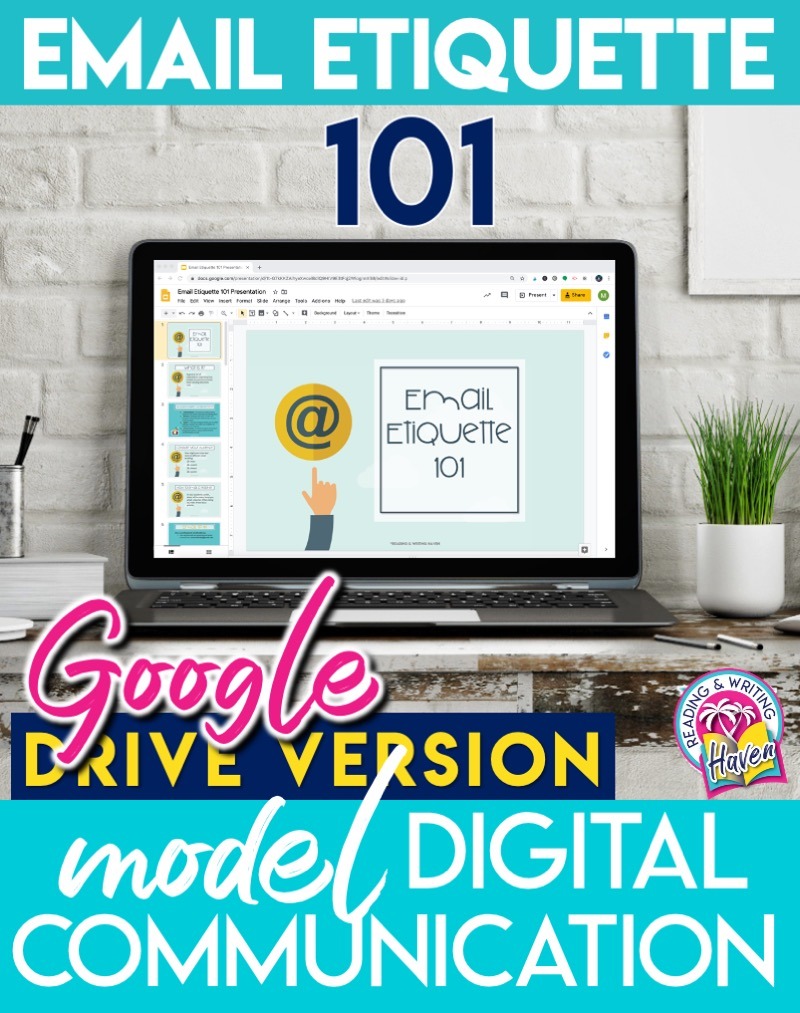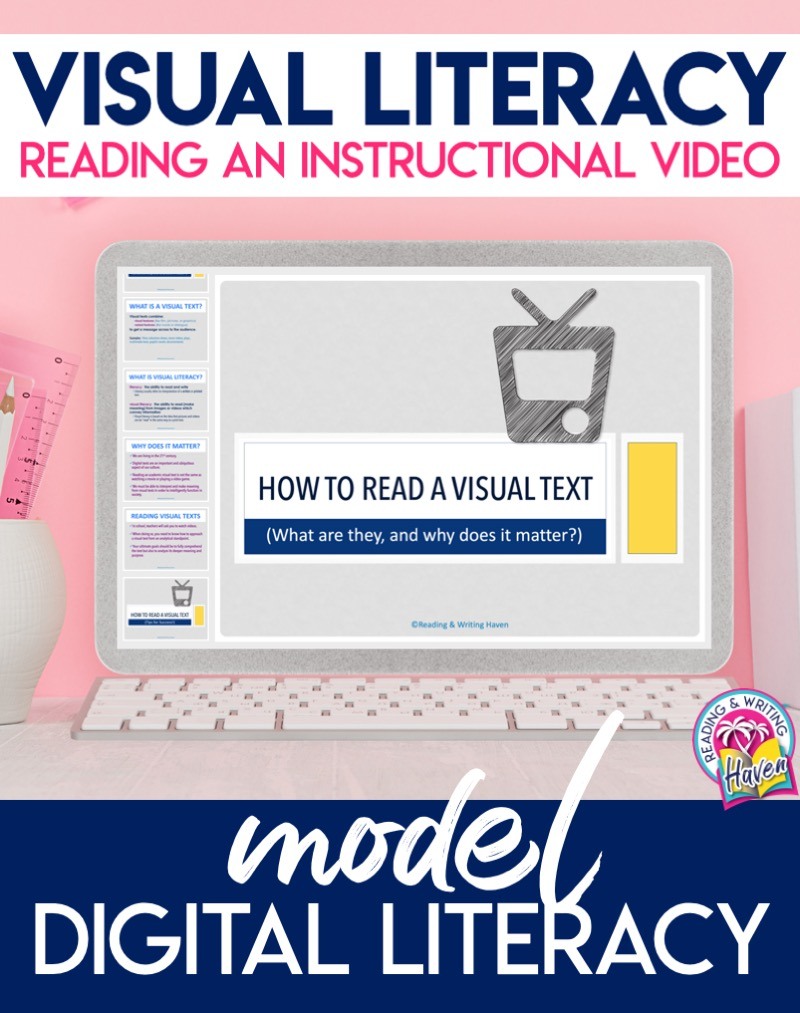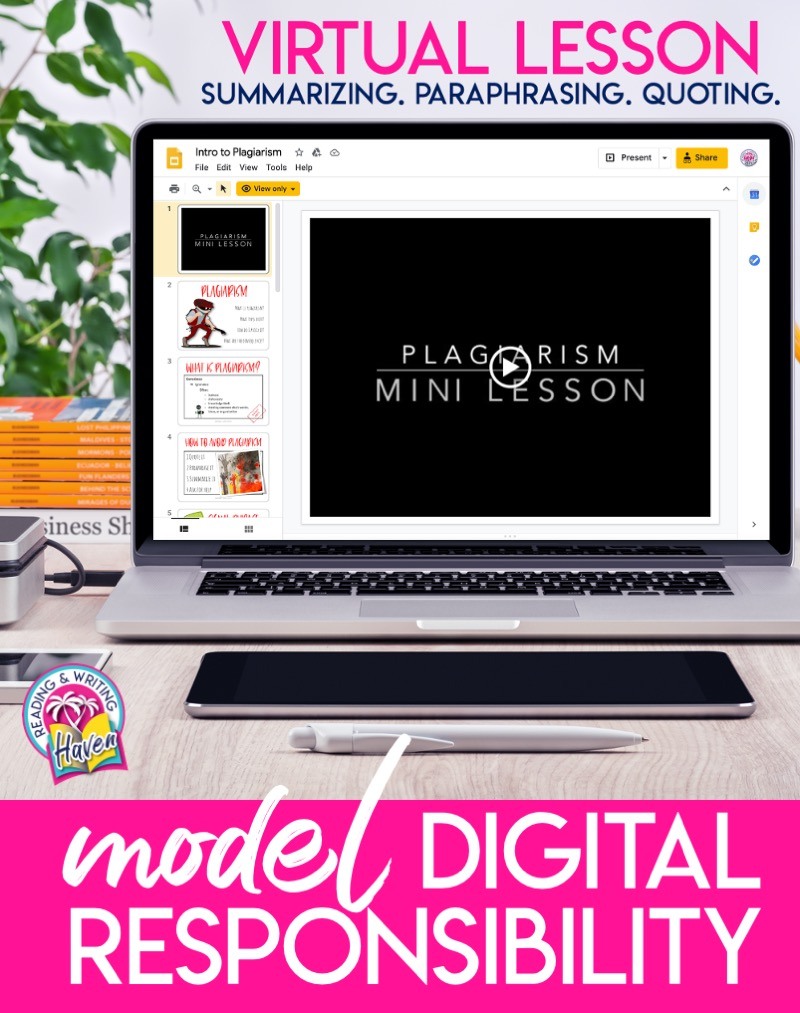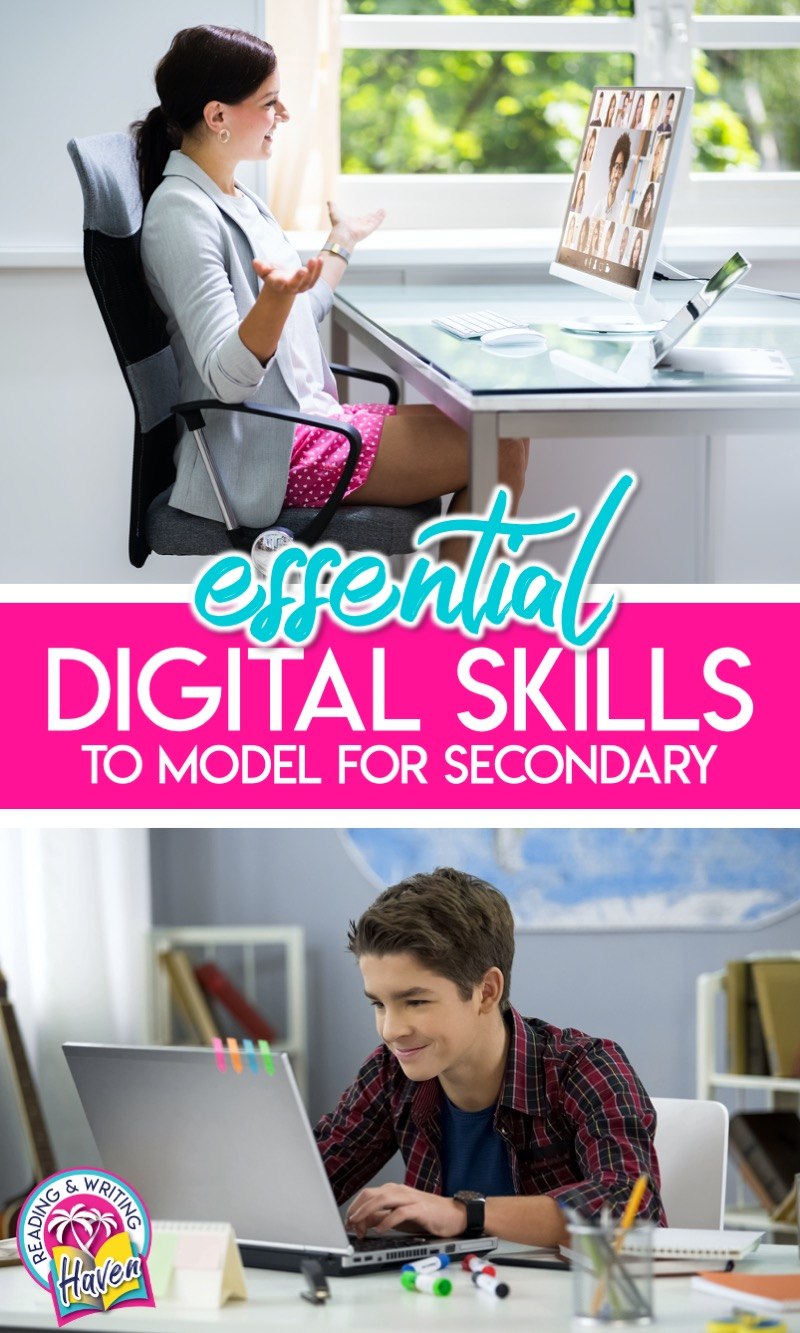3 Digital Skills to Model in the Secondary Classroom
Inside this post: Whether you’re teaching in a virtual, blended, or brick and mortar setting, middle and high school students NEED digital citizenship lessons. In this post, find some of my secrets for helping secondary students find success with digital skills, including digital communication, digital literacy, and digital responsibilities.
As a new teacher, I was aware of what annoyed me. Rude emails, incomplete work, plagiarized papers. These were a few of the issues that kept me up at night.
It’s not helpful to be aware of these issues, though, if we don’t purposefully target them for improvement. I never want to be someone who vents and vents and vents but then offers no possible solutions. At some point, we have to pivot our thinking.
It’s important that we pay attention to those things that bother us…because most likely, we can harness that frustration and develop a system that will help everyone involved to be more efficient and effective.
I wanted to write about three executive functioning systems that have helped my students to be more confident with digital skills. I hope it helps some of my readers and their students as well.
DIGITAL COMMUNICATION
I once often have received emails from students that are rude, demanding, or lacking coherency. This trend used to really bother me. On one particular occasion, I had a private one-on-one conversation with a student who had sent such an email. And? I realized that she had no idea what tone she had been conveying. Really, if no one teaches students to be aware of tone or how to write a professional email, it probably isn’t going to happen organically.
So, I brainstormed how I could begin embedding email etiquette lessons into my curriculum in order to save time and emotional stress. Email etiquette lessons can be embedded to teach informative writing skills like…
- tone and voice in writing
- how sentence structure and word choice impact a message
- organization of ideas with writing
- clarity and prioritization of ideas
- how to ask meaningful questions
We can also embed email etiquette into our lessons to teach students how to evaluate texts. What are the criteria that make an email effective? How might perspective impact the interpretation of this message?
If this is one of the digital skills you want to prioritize but either aren’t sure where to start or don’t have time to create something from scratch, I wrote about my approach. Read more about how to make it engaging so that students’ writing shows visible growth in a short period of time.
DIGITAL LITERACY
Middle and high school students are typically surrounded by screens. Video games, cell phones, tablets, televisions. When I first began flipping my classroom, I made an assumption. Since students are so immersed in technology, I thought they would have no problem with watching an instructional video for homework. But, that wasn’t the case.
Truly watching an instructional video to comprehend and learn is much more than passively being entertained by Disney+ or YouTube. That’s why I started teaching students the digital literacy skill of reading instructional videos.
Consider…
Students need to know that it’s important to:
- eliminate distractions
- take notes
- write down questions
- pause and rewind
- watch more than once!
Teachers can model how to watch a video by embedding it into their beginning-of-the-year routines and procedures. Create or find a few videos that you can watch with your class (mini lessons of reading, writing, vocabulary, grammar – you name it!), and walk them through the process of reading the video. We must be diligent with this modeling. One time isn’t enough! If we embed this digital skills lesson into the lessons we already planned to teach, it doesn’t take much extra time.
Many times, I’ve had to watch videos for work. If students want to build something or fix their car in the future, they’ll need to be able to “read” a YouTube video tutorial. Digital literacy is a skill that encompasses far more than simply being a critical thinker with videos. Yet, it seems like the perfect lesson to share with students during a time when virtual learning is the new norm.
This is the digital lesson I’ve used with my secondary students to help them get started with this kind of visual literacy. It emphasizes the idea of close reading a video with critical thinking skills instead of treating it like a five minute toy unboxing we can watch mindlessly while scarfing half a bag of Doritos.
DIGITAL RESPONSIBILITY
As the world moves up on the digital platform, teachers have an important task of educating students about digital responsibility. Specifically, it seems like plagiarism is more of an issue now than ever. I have always modeled proper citation skills through think alouds with my middle and high school students. I let them see my thinking, which makes a difference.
Even virtually, we can provide this window of transparency. I always like to teach an engaging plagiarism unit during first quarter or right before our first big research paper unit. All students can use the refresher, and the variety of activities I incorporate seem to be much more effective than writing in all caps on the syllabus, PLAGIARISM IS NOT ALLOWED AND WILL RESULT IN SERIOUS CONSEQUENCES. As it turns out, that approach doesn’t work very well.
As we teach students about plagiarism, we should show them different types. It’s more than just copy and paste. Turning in your friend’s essay from last year? Yep. That’s plagiarism. Piecing together bits and pieces of research from a variety of sources but not citing it? That, too.
It’s been helpful to also review skills like summarizing, paraphrasing, and directly quoting. What are the differences and similarities? When should we as writers use each type? Model examples, and then ask them to try with your support.
Pictures? We need to cite those, too!
You can read more about how I teach students to avoid plagiarism in the secondary classroom. This digital skills unit is so necessary. When we teach plagiarism and citation skills in a memorable way, students ask questions when they are confused and take charge of their learning. And, if there is any blatant plagiarizing, students generally own their mistake.
EXECUTIVE FUNCTIONING SYSTEMS
Digital skills are imperative for twenty-first century learners, but with the sudden shift to remote learning, their importance is elevated even more. I’ve taught a class that incorporates social emotional learning, digital citizenship, career readiness, and financial literacy. Sometimes, it feels like there just isn’t enough time to fit it all in.
But, when we embed digital skills lessons into our existing lessons, we are accomplishing two important learning targets in the same amount of time. Plus, we can use our creative approaches to create executive functioning systems that help everyone to work more efficiently.
Remember: Where there’s a problem, we can create a system to solve it.



